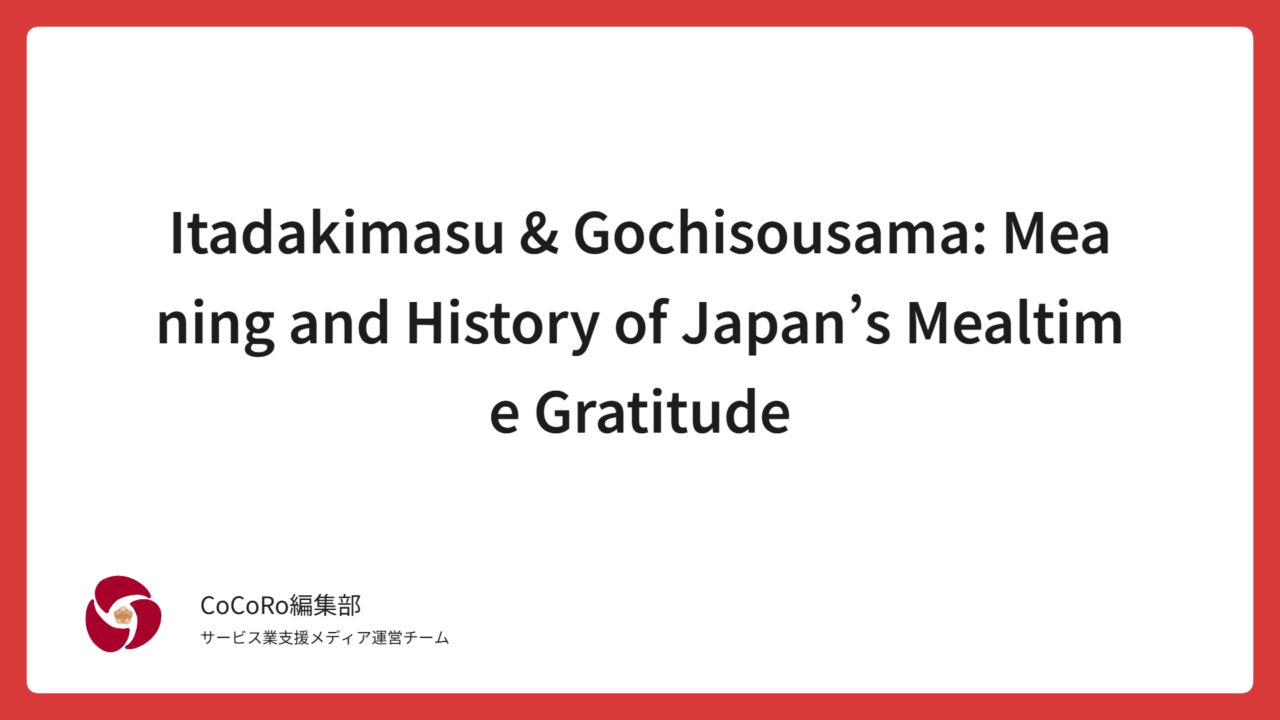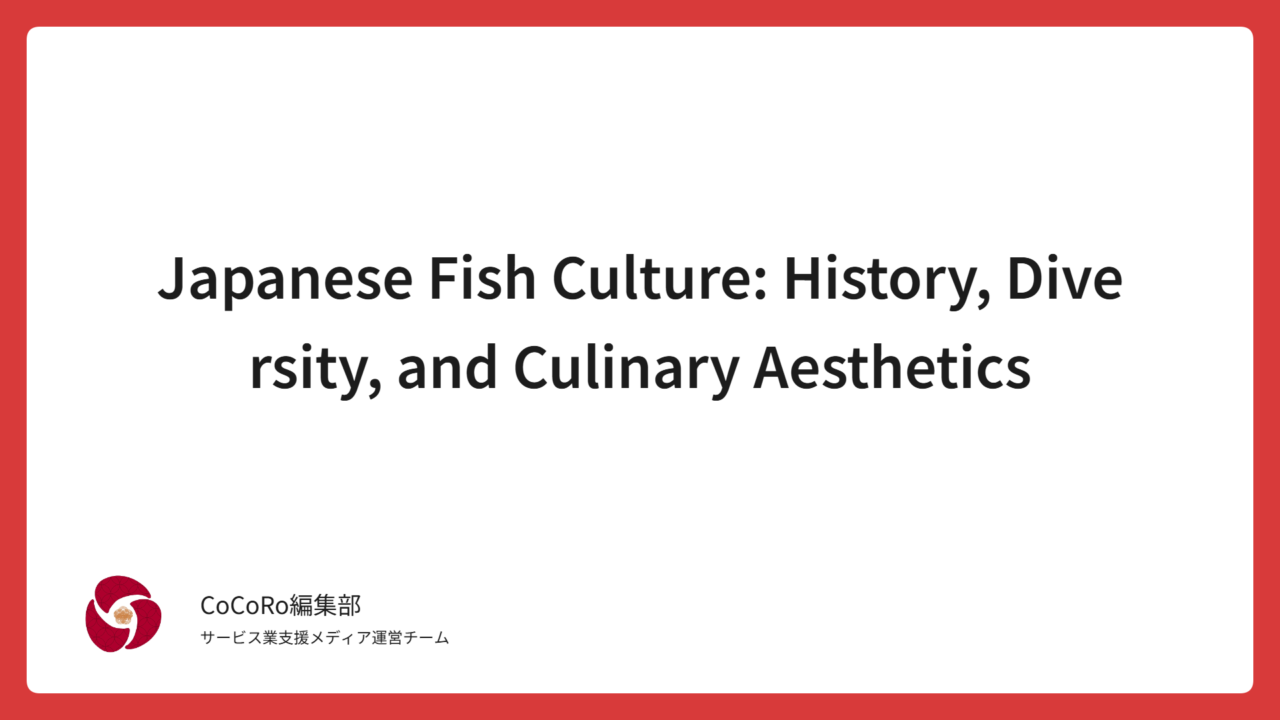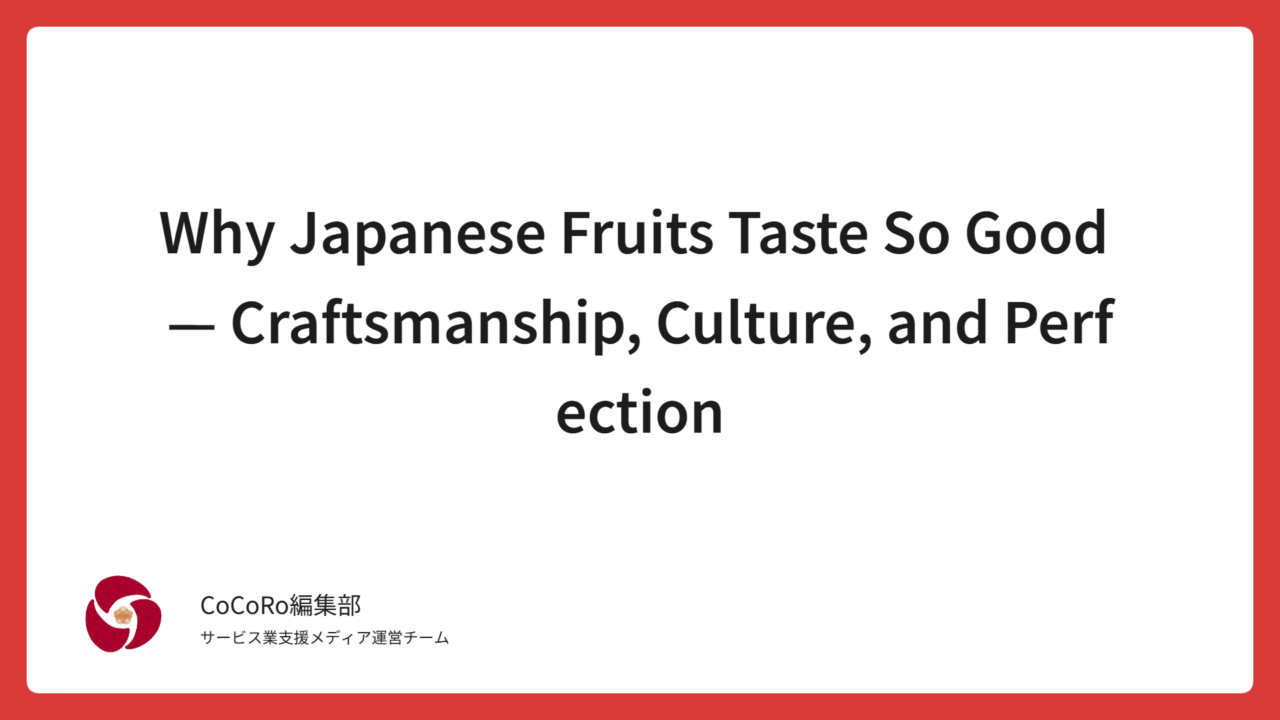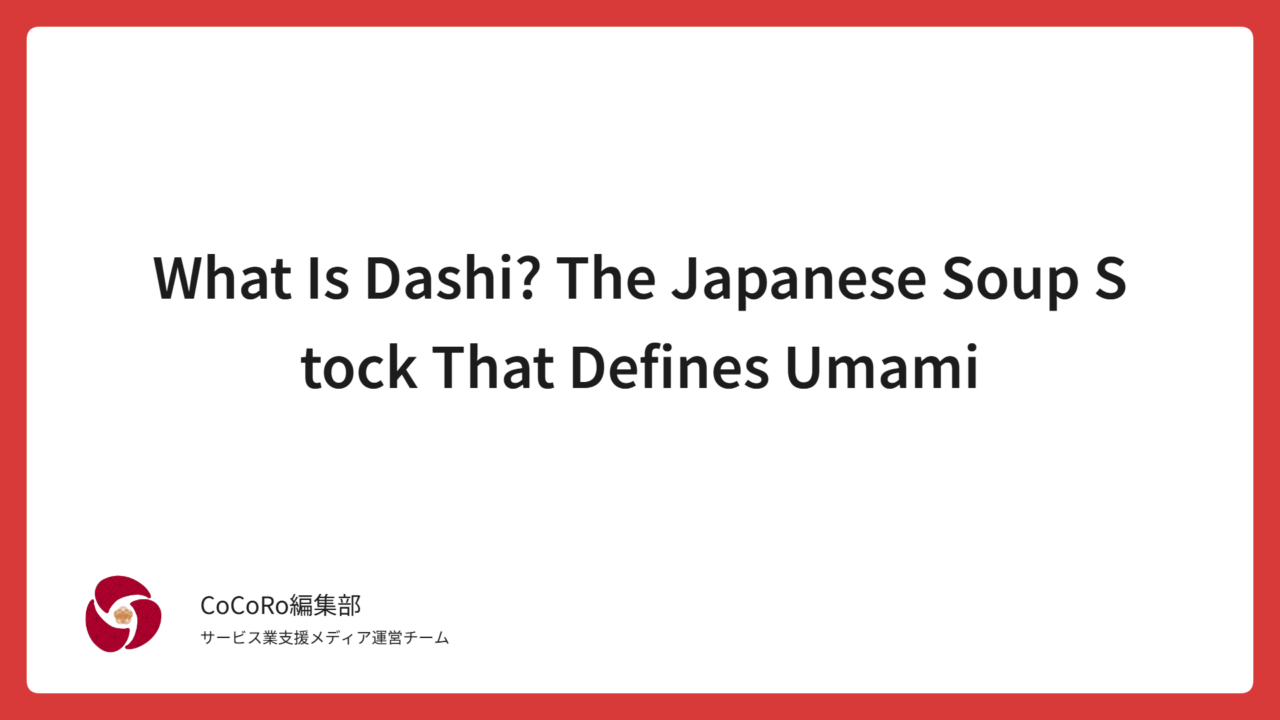
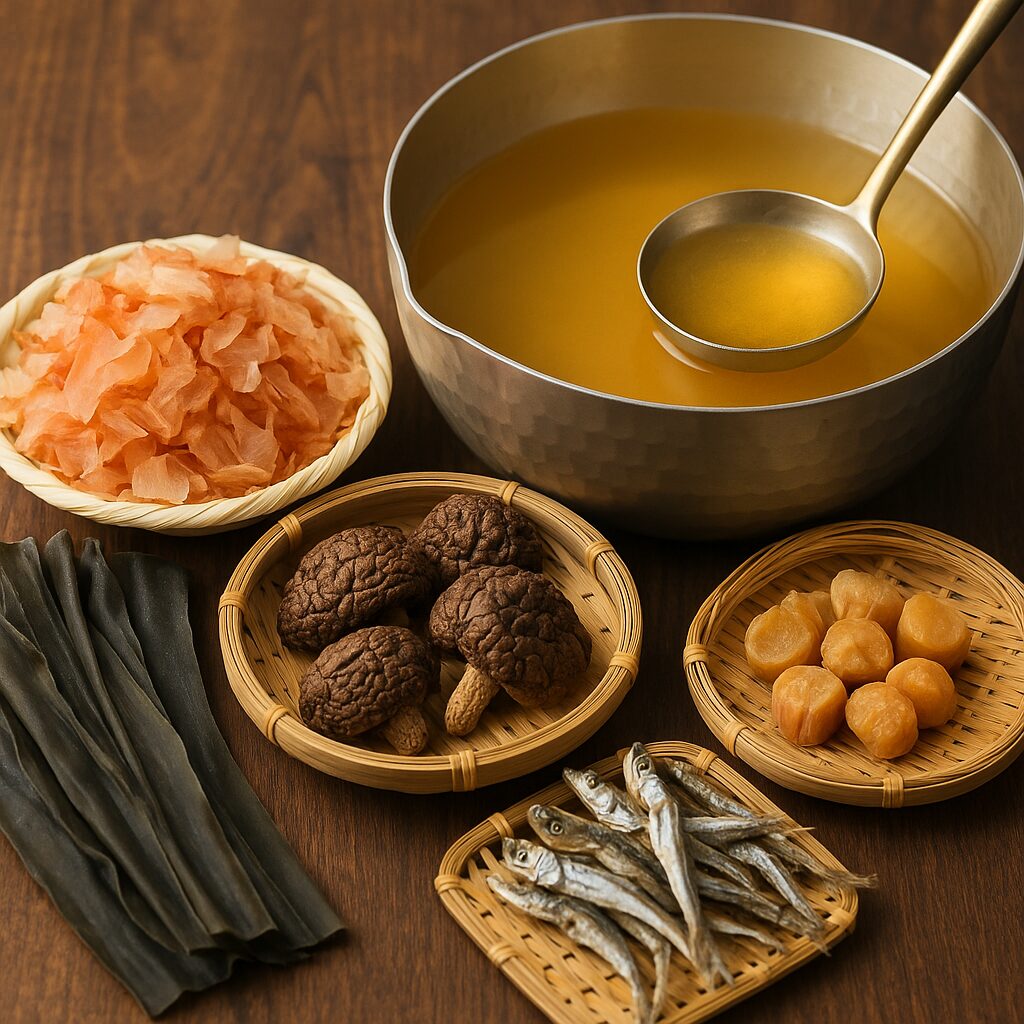
- Introduction: Dashi — the Japanese soup stock that quietly defines umami and supports every Japanese dish.
- Chapter 1: What Is Dashi — The Umami Foundation of Japanese Flavor
- Chapter 2: The History of Dashi — A Thousand Years of Umami Wisdom Passed Down Through Generations
- Chapter 3: Types of Dashi — A Diverse World of Umami Born from Nature’s Ingredients
- Chapter 4: The Art of Awase Dashi — The Harmonious Synergy of Ocean Umami
- Chapter 5: How to Make Dashi Today — Modern Ways to Draw Out Umami with Ease
- Chapter 6: Dashi vs. Artificial Seasonings — The Complex Umami Born from Nature
- Chapter 7: The Science of Dashi — How We Perceive Umami and Its Connection to the Human Body
- Chapter 8: Dashi and the World — Why “Umami” Is Being Embraced Globally
- Chapter 9: The Modern Culture of Dashi — Japan’s Evolving Taste Between Tradition and Innovation
- Chapter 10: The Philosophy of Dashi — The Japanese Sensibility That Turns the Ocean’s Stillness into Flavor
- Conclusion: To Understand Dashi Is to Understand Japan
Introduction: Dashi — the Japanese soup stock that quietly defines umami and supports every Japanese dish.
Miso soup, simmered dishes, udon noodles, chawanmushi—
in almost every Japanese dish, dashi, the traditional soup stock, plays an essential role.
However, when asked “What exactly is dashi?”,
many people might say, “I kind of know what it is, but it’s hard to explain.”
And today, dashi is drawing attention from around the world.
In France, three-star restaurants use kombu and katsuobushi,
while in Italian homes, the word “dashi” itself is beginning to enter everyday cooking vocabulary.
Dashi is more than just a seasoning—it is the very essence of Japanese culture.
In this article, we explore its true nature and timeless appeal through the lenses of history, science, and tradition.
Chapter 1: What Is Dashi — The Umami Foundation of Japanese Flavor
Dashi is a clear broth made by simmering ingredients such as kombu (kelp), katsuobushi (bonito flakes), dried sardines, shiitake mushrooms, shellfish, or shrimp to extract their natural umami essence.
The five basic tastes that humans can perceive are sweetness, saltiness, sourness, bitterness, and umami.
Among them, it is the Japanese who have refined and expressed umami in the most delicate and profound way.
In Western cuisine, “stock” is made by simmering meat and bones for hours,
while in Chinese cooking, tang is prepared with aromatic vegetables and spices.
Japanese dashi, however, is unique—it draws out a clear, refined umami flavor in just a few minutes of gentle heating.
Dashi is not something that adds flavor—it refines and balances it.
It never takes the spotlight; instead, it supports the ingredients and harmonizes the whole dish.
This quiet role reflects the very core of Japanese cuisine—the art of subtraction, where simplicity reveals true depth.
Chapter 2: The History of Dashi — A Thousand Years of Umami Wisdom Passed Down Through Generations
The origins of dashi date back to before the Nara period (8th century).
Ancient texts such as the Engishiki already describe cooking methods in which fish and shellfish were simmered to extract flavor.
Later, under the influence of Buddhism, meat consumption was prohibited,
which led to the development of shōjin ryōri—Buddhist vegetarian cuisine.
This encouraged a culinary culture that drew umami from plant-based ingredients such as kombu and shiitake mushrooms.
In the Meiji era (late 19th to early 20th century), Dr. Kikunae Ikeda discovered glutamic acid in kombu dashi and named it umami.
With this discovery, dashi evolved from a purely sensory delight into a scientifically recognized element of culture.
Chapter 3: Types of Dashi — A Diverse World of Umami Born from Nature’s Ingredients
Each type of dashi has its own distinct character depending on the ingredients used.
By understanding these subtle differences, one can unlock a surprising depth and richness in cooking.
- Kombu Dashi: Elegant and clear in flavor, it forms the foundation of Kansai-style cuisine.
- Katsuobushi Dashi: Rich in aroma and bold in taste, it’s perfect for miso soup and soba noodle broth.
- Niboshi Dashi: Toasty and nostalgic in flavor, it’s a staple of traditional Japanese home cooking.
- Dried Shiitake Dashi: Known for its deep aroma and lingering richness, it is often used in shōjin ryōri (Buddhist vegetarian cuisine).
- Ago Dashi (Flying Fish Dashi): Characterized by a fragrant, clean umami flavor, it is especially popular in the Kyushu region.
- Shellfish Dashi: Made from clams, shijimi, or scallops, it is rich in succinic acid, offering a refined sweetness and the gentle aroma of the sea.
- Shrimp Dashi: Prepared by roasting and simmering sakura shrimp or sweet shrimp, it combines a toasty aroma with a deep, rich sweetness—widely used in both Japanese and Western-style dishes, including ramen.
Dashi is, in a sense, a “map of Japan” — its flavors reflect the character of each region and the ingredients born from its land and sea.
Chapter 4: The Art of Awase Dashi — The Harmonious Synergy of Ocean Umami
Glutamic acid from kombu, inosinic acid from katsuobushi, and succinic acid from shellfish—
each of these compounds activates the taste receptors on the tongue, sending a signal of deliciousness to the brain.
When shiitake mushrooms or shrimp are added, their aroma and subtle sweetness enrich the flavor even further,
quietly yet unmistakably elevating the overall impression of the dish.
This intricate and delicate harmony of flavors is what represents the true essence—and ultimate value—of dashi.
Chapter 5: How to Make Dashi Today — Modern Ways to Draw Out Umami with Ease
- Ichiban Dashi (First Dashi): The classic base made from kombu and katsuobushi; ideal for clear soups and delicate dishes.
- Niban Dashi (Second Dashi): Made by reusing the ingredients from the first batch; commonly used for simmered dishes and miso soup.
- Packaged, Granulated, and Frozen Dashi: Convenient modern options that reproduce a consistent flavor without the need for lengthy preparation.
Recently, frozen stocks of shellfish or shrimp dashi have also become popular,
allowing people to easily enjoy the refined “aroma of the sea” at home—just like in a traditional Japanese restaurant.
Chapter 6: Dashi vs. Artificial Seasonings — The Complex Umami Born from Nature
Both dashi and artificial seasonings provide umami, yet their structures—and the way they deliver flavor—are fundamentally different.
Natural dashi offers a multi-dimensional flavor, created by the interplay of various umami components along with aroma and lingering depth.
In contrast, artificial seasonings such as monosodium glutamate (MSG) deliver a single-note, instant taste based on one dominant compound.
If natural dashi is like a symphony conducted by nature, then artificial seasoning is a single-note synthesizer.
Both have their own value—but they serve entirely different purposes.
When you want to cook with heart, there’s nothing quite like dashi made by hand.
Its richness lies not only in flavor but also in the quiet memory of the care and time that went into creating it.
Chapter 7: The Science of Dashi — How We Perceive Umami and Its Connection to the Human Body
The human tongue contains about 10,000 taste buds,
and among them are receptors that specifically detect umami compounds.
Compounds such as glutamic acid and succinic acid send signals to the brain that indicate “nutrient richness.”
That is why drinking dashi evokes a sense of comfort and even quiet happiness.
Another benefit of dashi’s umami is that it allows people to feel satisfied even with less salt,
making it increasingly valued in today’s movement toward low-sodium and health-conscious diets.
Truly, dashi serves as a bridge between deliciousness and health.
As food science advances, the intuition of traditional Japanese chefs is now being validated through modern research.
Chapter 8: Dashi and the World — Why “Umami” Is Being Embraced Globally
“Umami” has now become a global word.
Across Europe and the Americas, chefs are incorporating dashi—made from kombu, katsuobushi, shellfish, and shrimp—
to reinvent and elevate their own culinary traditions.
In France, sauces made with shellfish-based dashi have become fashionable.
In Italy, a new trend has emerged of adding kombu dashi to tomato sauce.
Meanwhile, in Nordic countries, some restaurants are even fermenting shrimp dashi to create innovative soups.
Chapter 9: The Modern Culture of Dashi — Japan’s Evolving Taste Between Tradition and Innovation
In recent years, the world of dashi has once again come alive with new energy.
AI is now being used to analyze and optimize flavor, sustainable kombu farming is expanding,
and a new generation of chefs is creating dishes like shrimp-based ramen and shellfish dashi soups that blend innovation with tradition.
The fusion of traditional craftsmanship and modern technology
is overturning the old notion that “dashi belongs to the past.”
It is now evolving into the very heart of Japan’s cuisine of the future.
Dashi, though a cultural heritage, is a living tradition—constantly evolving with the times.
It stands as a quiet revolutionary, carrying the future of Japanese flavor on its shoulders.
Chapter 10: The Philosophy of Dashi — The Japanese Sensibility That Turns the Ocean’s Stillness into Flavor
This reflects the Japanese aesthetic of “ma,” the beauty of empty space and subtle balance.
Dashi, in its essence, is a symbol of harmony between nature and humanity.
Kombu, shellfish, shrimp—all are gifts from the sea.
By transforming these blessings into flavor without waste or excess,
the Japanese express a quiet philosophy of living in harmony with nature.
Perhaps what draws chefs around the world to dashi
is this very quality—its understated depth, a quiet power that speaks without words.
Conclusion: To Understand Dashi Is to Understand Japan
To know dashi is to know Japan—
and to carry forward the timeless harmony between the sea and humanity into the future.

